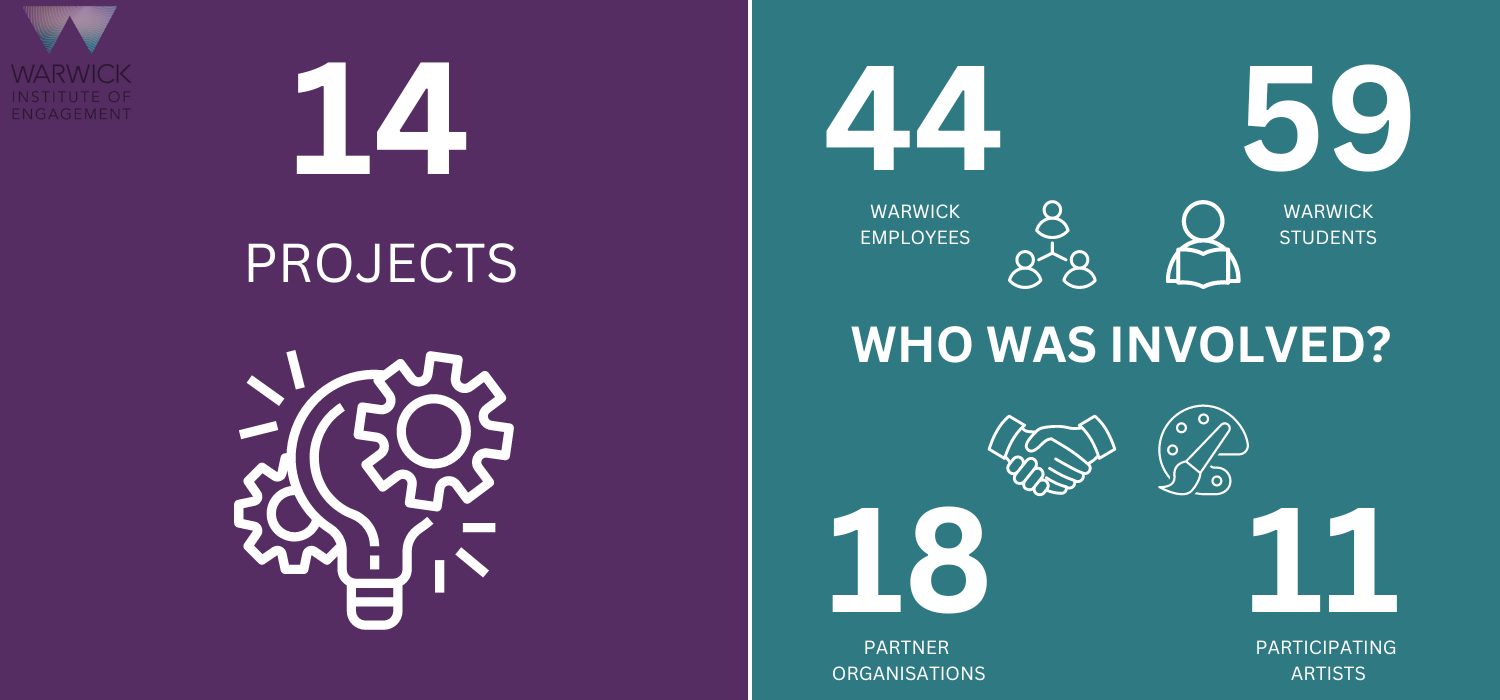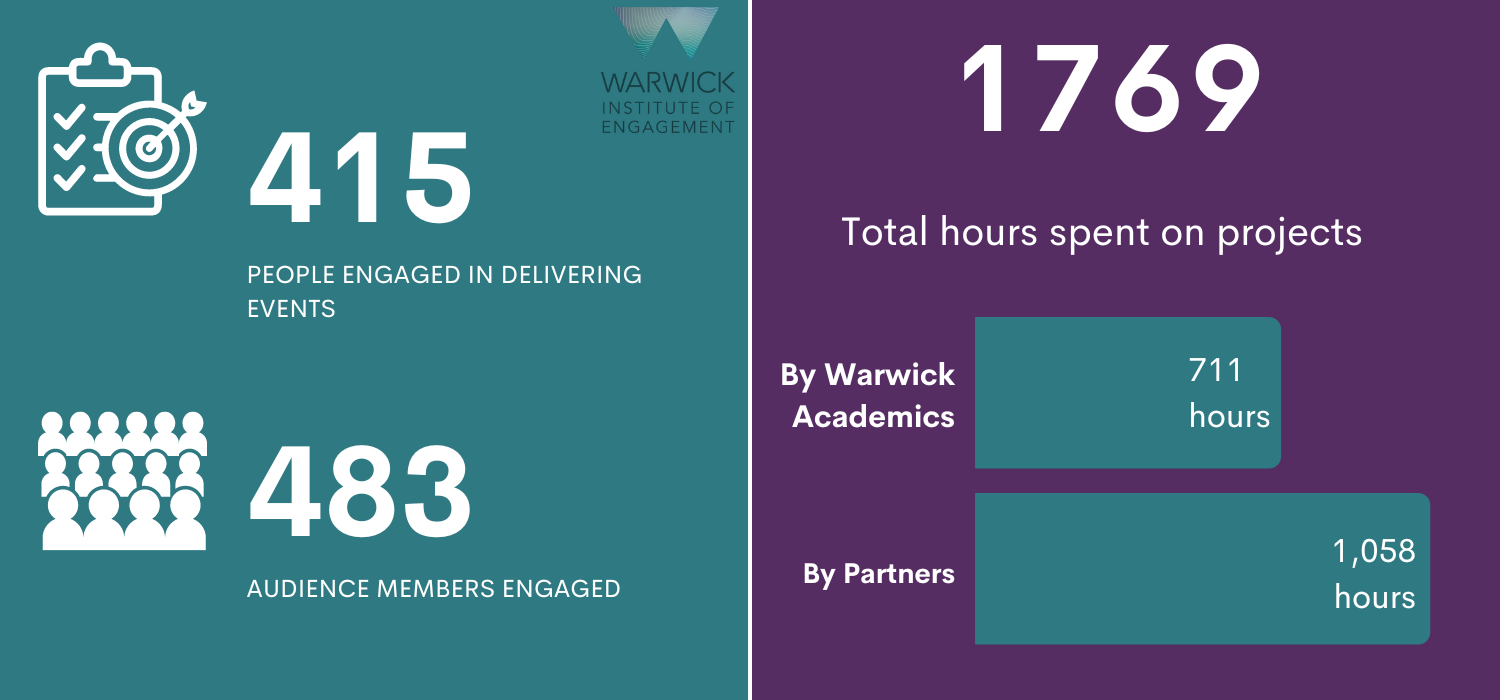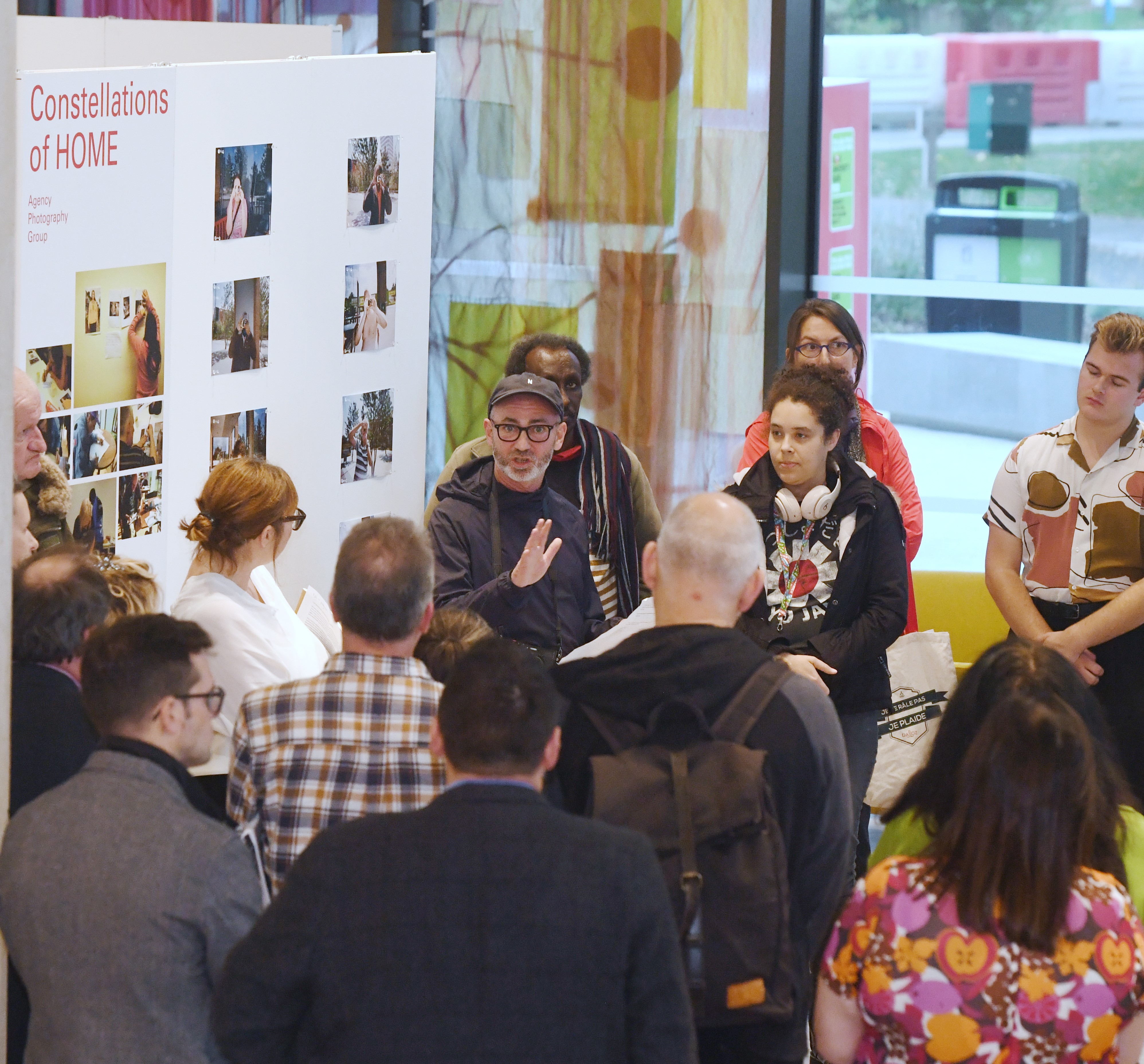Success Stories


We launched the WIE Collaboration and Co-Production Fund in the autumn of 2021 to support staff and students to develop ongoing strategic relationships with local, regional, and national partners. We hoped that in time these relationships would lead to co-production of, and collaboration in, new research projects, innovative programmes and strategy, and the co-organisation of public engagement activities. We granted 14 awards of up to £3,000 in 2021-22 (and relaunched the fund in 2022-23, funding a further 10 projects). We reflect below on the successes of the first year of the Collaboration and Co-Production Fund.

Awarded Projects
A full list of the awardees in 2021-22 can be found here:

Funding new partnerships
We funded a lot of partnerships that were based in Coventry and Warwickshire, continuing the university’s commitment to support economic, social and cultural growth in our region, making it a more sustainable place to live for future generations. We’ve been working in the region on our own programmes and activities, including for the Resonate Festival, and it was great to see new partnerships being built through this fund with organisations whose work had also been featured in our year-long festival. Local partners for the Collaboration and Co-Production Fund projects included: Agency Photography Group, The Belgrade Theatre, Coventry Boys and Girls Club, Coventry Foodbank, Coventry Integrated Sexual Health Services, Coventry Refugee and Migrant Centre, COVert Arts, Crisis Skylight Coventry and Warwickshire, Cvllective, Highly Sprung, Underground Lights, Warwick Arts Centre, Warwickshire Museums, Warwickshire Wildlife Trust, and Warwickshire Young Carers. Further afield, awardees worked with the Royal Geographic Society, The Music Works, and Feed the Hungry UK.



Innovation and empowerment
These projects developed new and innovative ways of working with local communities. Many locally-based participants in Collaboration and Co-Production Fund projects felt increasingly empowered in their everyday lives, whether that was empowerment to access essential services (as with the women of Coventry Refugee and Migrant Centre who gained easier access to sexual health care services in the city thanks to Abimbola Ayorinde and Majel McGranahan’s project) or the young carers of the Warwickshire Young Carers group who became an advisory body for Michael Wyness and Fiona McCallum’s research into schooling for young carers. Partnerships through this scheme amplified seldom heard voices and feedback on the projects frequently suggested that this led to increases in participant wellbeing and pride. For example, the poet Phil Wilcox described ‘hearing young poets tell their stories, rouse an audience and express their truth’ in the final performance of Empowering Young Voices as ‘electrifying’ and ‘poetry at its most vital’. Bernie, a photographer in the Constellations of HOME arts and homelessness project said that it was ‘unbelievable to come here to the university today and see the exhibition. From a cup of coffee at Café One – a journey – from homelessness to success. So proud to have been part of this project – changing the image of homelessness’. New resources for local communities were also created through the fund: for example, Thijs van Rens worked with Coventry Foodbank to create the Mobile Community Pantry which offers a new way to supply Coventrians with sustainable healthy food, as well as creating a mobile ‘lab’ for University of Warwick researchers.

Partnerships with local artists
The Collaboration and Co-Production Fund has particularly benefited academics working in partnership with local artists. These included the poets John Bernard, Joelle Taylor and Phil Wilcox (who all worked with Karen Simecek on the Empowering Young Voices project); the photographer Anthony Luvera who collaborated with Nadine Holdsworth on the Constellations of HOME arts and homelessness project; textile artist Julia O’Connell who led workshops for Rachel Turner-King’s collaboration with Warwick Arts Centre and The Belgrade theatre for the International Drama in Education Research Institute conference; and emerging visual artists from Coventry (Tala Lulu, Taiyewo Ajose, Betty Molyneux and Chelle Hanson) who were twinned with Warwick student writers through Gonzalo Ceron Garcia’s work with COVert Arts on the Pen to Canvas project. WIE-supported partnerships between artists and researchers show there are no hard and fast lines between research and creativity: we saw that artists incorporate research into their practice all the time, and researchers enrich their work through engagement with the arts.

New opportunities within the university
As well as benefits for a series of local communities, and for organisations further afield, these partnerships opened up new opportunities within the university. Almost half of the 2021-22 Collaboration and Co-Production Fund Projects have had direct impacts on the development of new teaching and learning plans which include new project work, field visits and placements for undergraduate and postgraduate students. For example, Friederike Schlaghecken and Lukasz Walasek’s collaboration with Warwickshire Wildlife Trust has led to the establishment of new URSS projects, the co-funding of two MSc students who will continue work with the Trust, and future plans that will support new PhD studentships. Paul Grigsby’s work with Warwickshire Museums will continue with new work placement opportunities for undergraduates in the Classics and Ancient History department, working on the South Warwickshire Silver Denarii Hoard.
New and collaborative research
We have been delighted to see that the Collaboration and Co-Production Fund has led to the production of new, collaborative research. This has included two co-authored journal articles written with project partners, two joint workshop/conference presentations planned, two further public engagement events in the pipeline, and more ambitious plans that feed into the development of two future research centres in the university (the Centre for Access and Participation in the Arts and the Centre for Wildlife Protection). These projects show how research can be co-designed and co-produced according to the needs and agendas of the communities that the research will benefit. Half of our projects have led to the development of future, collaborative funding bids.
Enlivening the campus & boosting the university's cultural impact in Coventry and Warwickshire
As the university is developing its Cultural Strategy, which aims to enliven campus through the arts and culture and ensure that the university plays a positive role in the wider cultural scene of our region, it was also pleasing to note that the WIE Collaboration and Co-Production Fund projects in 2021-22 did both of these things. For example, participants (and visitors) who had never visited campus felt welcome and included on campus through these projects. Nadine Holdsworth’s work built a ‘bridge of inclusion’ by supporting people involved in Constellations of HOME. Eight of the ten participants had never been onto campus prior to this project and there was significant pride in accessing the new Faculty of Arts Building for their workshops and the exhibition. The exhibition also brought many additional people onto campus who had experienced homelessness in the city (supported by Crisis and the community group Underground Lights). Additionally, projects by Vishalakshi Roy and Rachel Turner-King worked in partnership with local arts organisations to plan for their future.
All of the partnerships funded through the Collaboration and Co-Production fund are ongoing. The scheme has really showed us that relatively small pots of seed funding can enable our researchers and their collaborators to work in new and experimental ways. We look forward to seeing what this year’s projects achieve too – watch this space!
